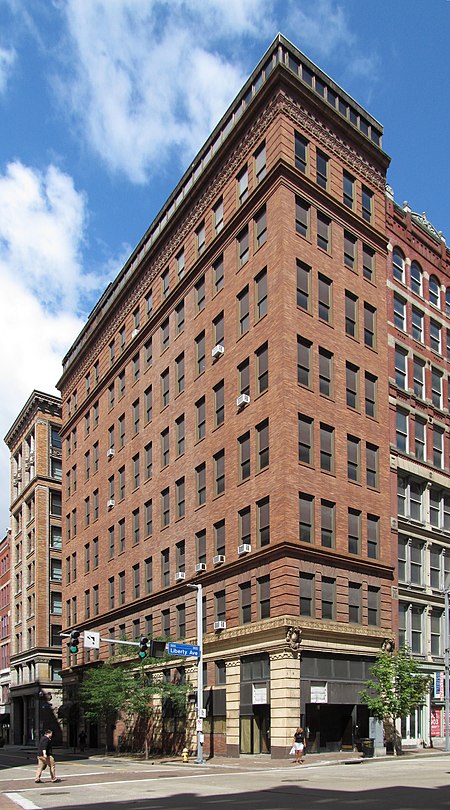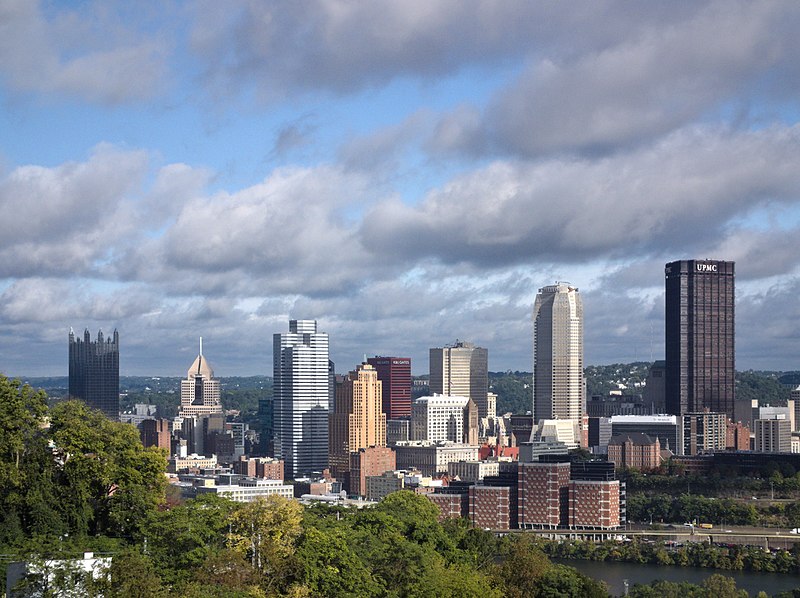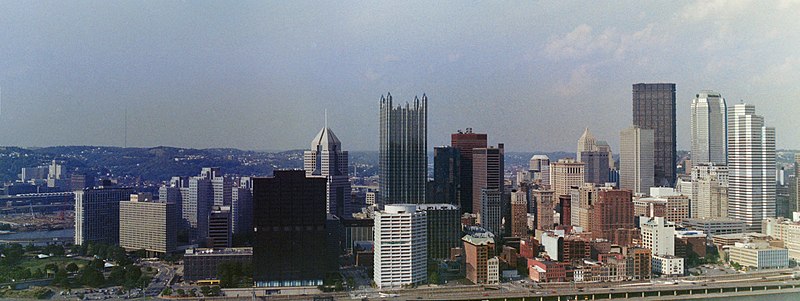
-
U. S. Steel Tower
-
McNally Building

The McNally Building on Penn Avenue was built in 1896. It is a good example of the kind of tall, narrow building that grew up in the early days of the elevator. But of course the most important thing about this picture is that it allows old Pa Pitt to indulge in his habit of photographing buses coming toward you.
Addendum: The architect was Thomas D. Evans, who also designed the Springfield and Morse schools. Source: The Inland Architect and News Record, March 1895.
Architect T. D. Evans has plans completed for the McNally building, an eight-story warehouse, to be erected on Penn avenue, stone and brick.
-
Skyline from the South Side Slopes
-
Do You Know This Face?
-
905 Liberty Avenue
-
The Skyline in 1999
-
Renshaw Building

The Renshaw Building at Liberty Avenue and Ninth Street was built in 1910, with an extra floor added to the top at some time in the modernistic era. It’s a perfect miniature skyscraper, with base, shaft, cap, and the outlined bosses’ floor above the main floor. There are some good terra-cotta decorations, especially around the Ninth Street entrance.



-
Logan-Gregg Hardware Co. Building

Built in 1915 to a design by the prolific and versatile Charles Bickel, this is now part of the Creative and Performing Arts high school in the Cultural District, the rest of which has picked up on Bickel’s decorative stripes and made them the theme for the whole facility. The Pittsburgh History and Landmarks Foundation says that “Classrooms flow from one building into the other,” which must make it difficult to know where your Theater Arts class is on any given day.
-
Regal Shoe Company Building
-
Horne’s













